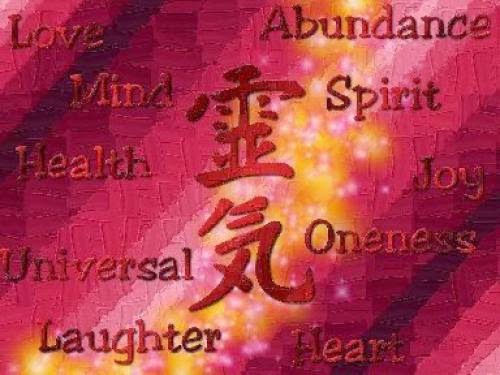
Most of the affirmation web sites do not contain much new information, since the method is so simple and on the surface it seems there is little to discuss. Here's one, though, that's kind of interesting - DailyAffirm. In fact, I think a good case can be made that the author of the site, Jeanie Marshall, presents a model of affirmations that conforms to the operant paradigm. It is important to understand that the basic operant methodology is not just limited to formal ritual magick. It can be used in the context of just about any coherent symbol set, even one as open as the basic affirmation technique.
What follows is a basic guide to New Age sorcery, comparing Marshall's method with the formal operant ritual template.
Marshall defines five types of affirmations that follow a specific pattern. These types are:
* Releasing/Cleansing. These types of affirmations relate to the elimination of unwanted ideas or patterns of behavior that are having a negative effect on your life. Ritual magicians use the Lesser Banishing Ritual of the Pentagram in much the same way - when performed properly, the LBRP will clear the mind of negative thoughts and energy in a general manner.
* Receiving/Accepting. These types of affirmations open us to the energy and resources of the universe. This is akin to the use of the Lesser Invoking Ritual of the Hexagram in which the macrocosmic aspects of the four elements are invoked together, so combining steps 1 and 2 opens an operant field.
* Being/Intending. These types of affirmations serve to group our intentions in the highest good and harmonize them with what Thelemites call True Will, your basic spiritual nature or higher purpose. This step is similar to Taking Refuge and Generating Bodhichitta in the ritual template, which suggests the experiment of moving those two steps so that they follow the opening of the operant field to see if that shift might improve the effectiveness of rituals.
* Acting/Claiming. These types of affirmations relate to directing the manifestation of energy along specific lines. The conjurations used in ritual magick span this step and the step following, and are often combined. On the other hand, in Tibetan Buddhism this step could be referred to as the Generation Stage of meditation, in which mantras are recited and the visualization of the deity is maintained.
* Integrating/Embodying. These types of affirmations relate to the integration of the energy directed in step 4 into embodied personal consciousness so that they may fully manifest within our lives. This step is usually part of the conjuration, or in some cases may consist of a consumption of a Eucharist that absorbs the conjured energy in a physical way. In Tibetan Buddhism, this is referred to as the Completion Stage, in which the mantra stops, the visualization of the deity dissolves into yourself, and the mind rests in its own inherent nature that is at one with the mind of the deity. Both this classification of affirmations and the Tibetan system suggest that perhaps rituals should not simple be shut down with a license to depart, but instead end with a period of meditation during which the participants allow the conjured energy to integrate into consciousness. The final closing would be a benediction of some sort charging the participants to go forth with the pride of the invoked deity or assurance of the integration of the conjured energy.
Marshall provides affirmations throughout the year that spend a month on each step in the order given, then starting over at step 1, and so forth. For a "New Age sorcery" ritual, though, all five could be combined in the order given in a single session. Some number should be determined that relates to the affirmations corresponding to steps 4 and 5, and the appropriate affirmations for each step could then be written or recited that many times with a short period of letting the mind rest between steps. The final step would then be followed by a longer meditation session which will allow the form thus constructed to merge into personal consciousness.
So there you have it - operant magick is not just for ceremonial work. Hopefully this article has given you some insight into how the operant paradign could apply to whatever system of magick you generally work with and demonstrated the basic structure that is common to many different traditions of ritual work by example.







